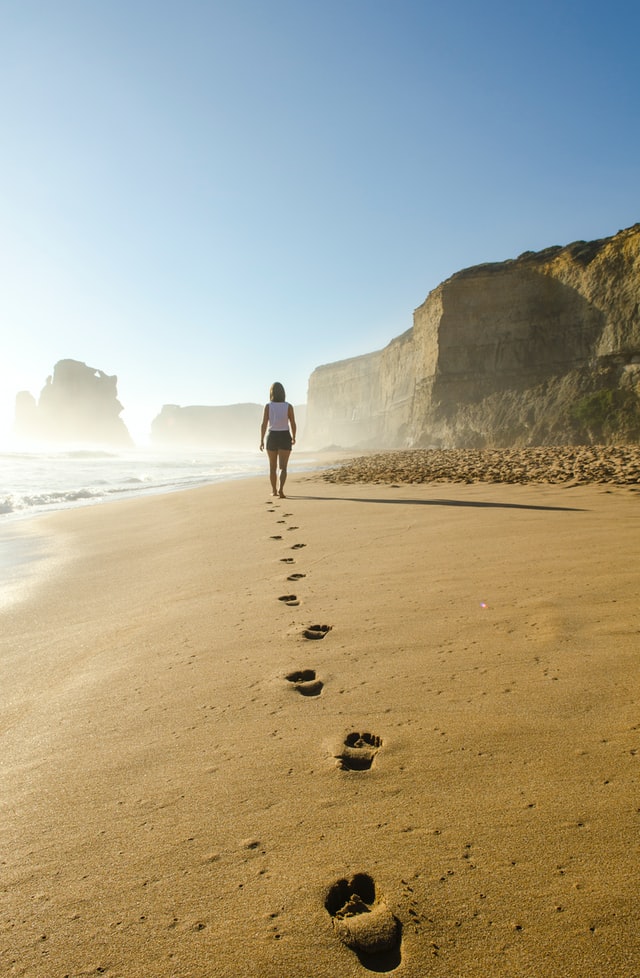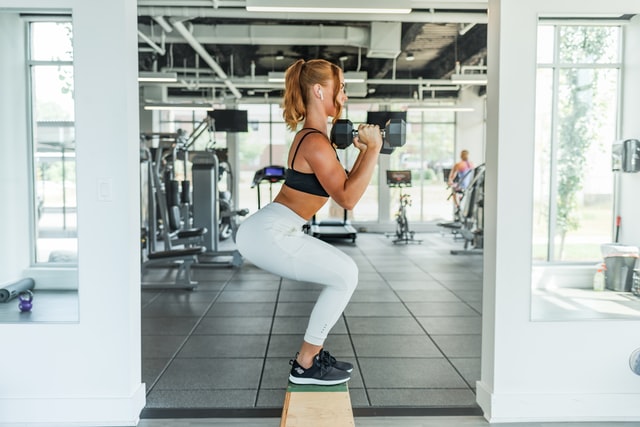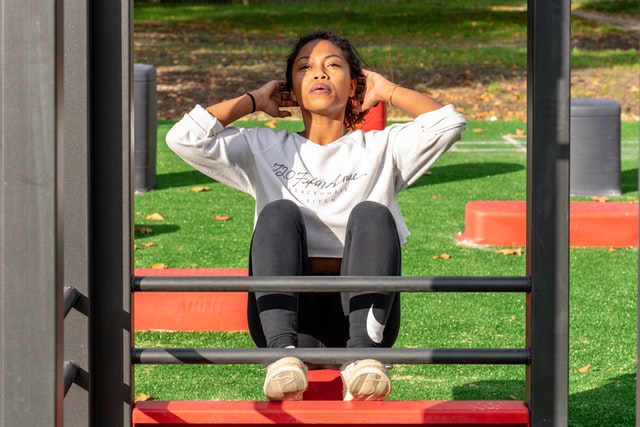Women in Motion: How to Get Stronger
 Walking is a great way to increase your cardiovascular fitness. But walking does not necessarily increase your muscle strength, especially if you primarily walk on flat paths. This has become very apparent to me over the past 18 months. In addition to walking, running, and hiking, I used to do Crossfit several days a week until the pandemic forced my gym to close for a surprisingly long time. At first, I tried to continue doing CrossFit-type workouts at home alone, but eventually, I just stopped and increased my running instead. What I have noticed over that time is that while I may be getting fitter from a cardiovascular perspective, my muscles have atrophied. Yes, despite running 150-200 miles each month, my leg muscles are not maintaining the strength they used to have because running without strength training does not build muscle mass. So why do I care about muscle mass? Muscle mass is important for overall strength which is important for getting up (and down) hills and for going faster. And good overall body strength is important for so many things we do in our daily lives. So lately I have been thinking about how to re-incorporate strength training into my routine.
Walking is a great way to increase your cardiovascular fitness. But walking does not necessarily increase your muscle strength, especially if you primarily walk on flat paths. This has become very apparent to me over the past 18 months. In addition to walking, running, and hiking, I used to do Crossfit several days a week until the pandemic forced my gym to close for a surprisingly long time. At first, I tried to continue doing CrossFit-type workouts at home alone, but eventually, I just stopped and increased my running instead. What I have noticed over that time is that while I may be getting fitter from a cardiovascular perspective, my muscles have atrophied. Yes, despite running 150-200 miles each month, my leg muscles are not maintaining the strength they used to have because running without strength training does not build muscle mass. So why do I care about muscle mass? Muscle mass is important for overall strength which is important for getting up (and down) hills and for going faster. And good overall body strength is important for so many things we do in our daily lives. So lately I have been thinking about how to re-incorporate strength training into my routine.
According to Heather Fletcher, an exercise physiologist based in Tampa, Florida Doing squats will help you build strength and improve muscle mass. She says, “You will recruit a high amount of energy and burn fat, and this will help you become stronger in your activities of daily life.”
 As with any activity, it is important to maintain proper form while performing your squats. Here are tips to help you perform the perfect squat:
As with any activity, it is important to maintain proper form while performing your squats. Here are tips to help you perform the perfect squat:
- Stand with your feet shoulder-width or slightly wider than shoulder-width apart.
- Allow the big toes, pinky toes, and heels to grip the floor like a tripod.
- Take a big inhale. Hinge at the hips and bend your knees, slightly leaning your chest forward while keeping your back straight.
- Lower yourself down as if you are sitting into a chair. Make sure your knees are in line with your feet and are not moving forward past your toes.
- Try to lower yourself down until your thighs are parallel to the floor. If you cannot get down that far at first, no worries! Just go as far as you can. As you continue to practice, your mobility will improve.
- Press into your heels to stand back up, exhaling as you reach the top.
- Do not let your knees cave in at any point during the movement
- Do not let your heels come off the floor at any point during the movement
- Do keep your core engaged during the entire movement
As with every exercise, if you do these regularly you will find they get easier. In fact, doing squats may get so easy that they no longer feel like a challenge. Never fear! I have a solution for that! And no, it does not mean you have to do a gazillion of them to continue to reap the benefits. Rather, you can add challenges to your squats, for example by adding weights or doing “jump squats”.
 If you do not have “official” weights like dumbbells handy, you can perform weighted squats by holding a bag of cat litter or a big bag of dog food close to your chest while you perform squats.
If you do not have “official” weights like dumbbells handy, you can perform weighted squats by holding a bag of cat litter or a big bag of dog food close to your chest while you perform squats.
To perform: jump squats”, in Step 6 above, when moving back up, push off from your mid-foot and “jump” up.
Squats are a compound movement, meaning they tap into multiple muscle groups across multiple joints. According to Judine Saint Gerard, a certified personal trainer and fitness coach based in New York City squats work the entire body. And doing them consistently with correct form can help build everything from strength and power to balance and flexibility, she says. The lower body bears the brunt of the motion, specifically your quads, which run along the front of the thigh, and all three muscles in the butt: the gluteus maximus, medius, and minimus. In addition, other muscles in your legs such as your hamstrings and hip flexors are activated, explains Saint Gerard. And performing squats also activates the stabilizing efforts of your core, which keeps your torso upright during the movement and reduces stress on the lower back.
If you have any questions about form, please do not hesitate to reach out. I will be more than happy to help.
Carla Frank is an Active Lifestyle & Adventure Mentor, speaker, runner, walker, and hiker. She helps women of all ages and physical abilities develop a powerful partnership with their bodies so they can enjoy a healthier and more active lifestyle. Carla herself is an accidental athlete. She literally failed physical education in school and then spent most of her life behind a desk or on the couch.
She walked her first marathon in honor of her 40th birthday, and since then, she has participated in over 120 races including 3 consecutive marathons in 3 days around awe-inspiring Lake Tahoe. She can be reached at [email protected]






